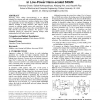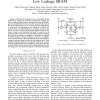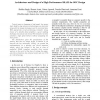54 search results - page 2 / 11 » Low power SRAM techniques for handheld products |
DAC
2006
ACM
14 years 6 months ago
2006
ACM
Increasing source voltage (Source-Biasing) is an efficient technique for reducing gate and sub-threshold leakage of SRAM arrays. However, due to process variation, a higher source...
ISCAS
2007
IEEE
14 years 1 days ago
2007
IEEE
— Reducing the leakage power in embedded SRAM memories is critical for low-power applications. Raising the source voltage of SRAM cells in standby mode reduces the leakage curren...
ITC
1997
IEEE
13 years 10 months ago
1997
IEEE
The detection of cell stability and data retention faults in SRAMs has been a time consuming process. In this paper we discuss a new design for test technique called Weak Write Tes...
VLSID
2002
IEEE
14 years 6 months ago
2002
IEEE
Critical issues in designing a high speed, low power static RAM in deep submicron technologies are described along with the design techniques used to overcome them. With appropria...
TVLSI
2008
13 years 5 months ago
2008
-- Aggressive CMOS scaling results in low threshold voltage and thin oxide thickness for transistors manufactured in deep submicron regime. As a result, reducing the subthreshold a...



